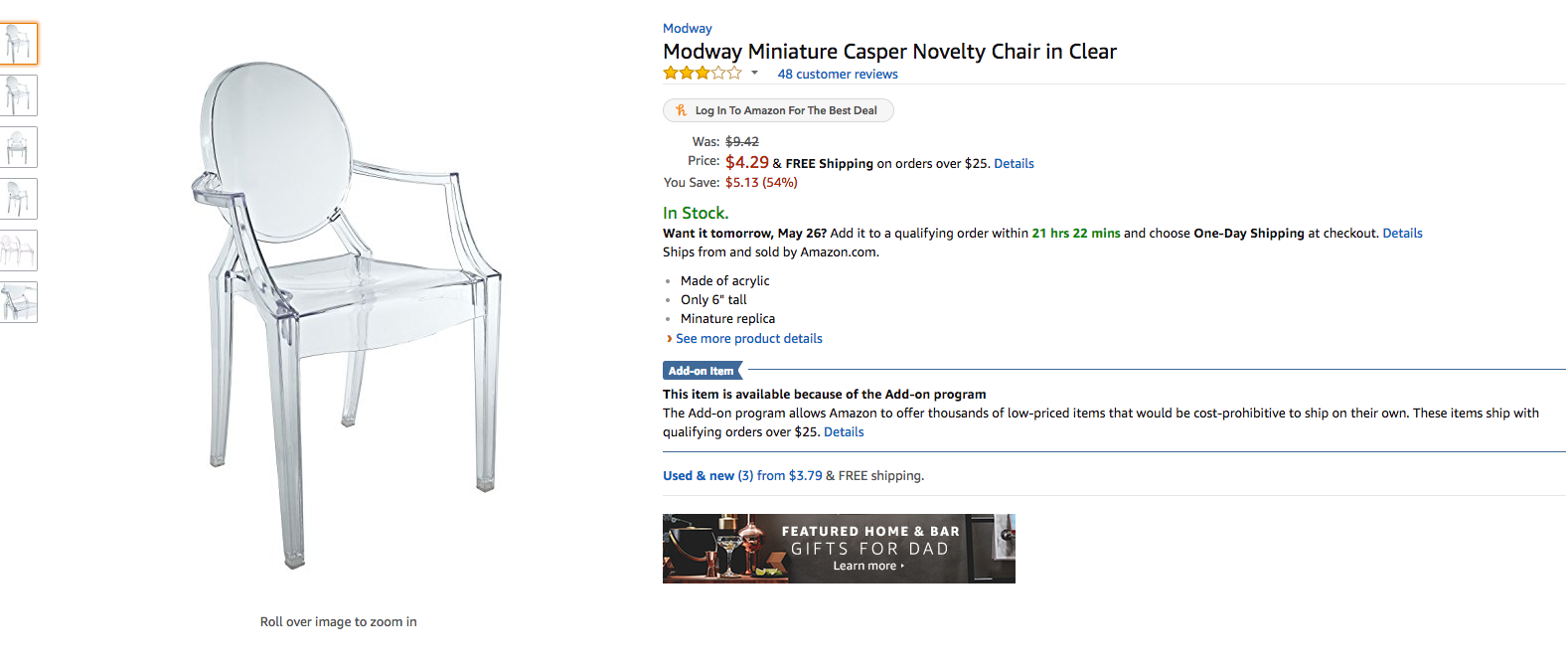Shopping In The Amazon Era
A fella two rows back from me on my flight today was lamenting the fall of Sears. He hadn’t shopped there in a while and was surprised how far and how fast the retail experience at their stores had declined. As more and more shopping moves from “bricks and mortar” to online, we better start developing a new skill set for shoppers. You will see one example of what can go wrong with online shopping described below.
But before we get to that, here are some stats showing the dominance of Amazon from a recent KQED Radio Interview with Atlantic writer, Derek Thompson:
- We have too many stores to begin with and we are shifting our spending habits: “First of all, in the 1980s and 1990s, America just built way too many malls. We have, by one measure, 40 percent more shopping space per capita than Canada, which seems to be doing just fine, and 10 times more than Germany. So we just have way too much space to shop, particularly now that our couch is essentially its own virtual mall. And Americans are shifting their spending from materialism to meals, I guess you could say, or materialism to experiences.”
- Young people driving the shift in retail trends: “I think young people – first of all, young people drive lots of cultural shifts, specifically because they have very little stake in the status quo. In this case, you have a lot of young people who, let’s say – and this is not describing all millennials, but those who, you know, went to four-year universities. Those sort of young people are more likely to live in downtown areas in major cities. And Amazon tends to have warehouses relatively close to those areas, so shipping tends to be very convenient.
- And here is an amazing stat: 50% of households have an Amazon Prime account: “You do have a situation where I think right now 50 percent of Americans, according to several things that I looked at – this is astonishing, 50 percent of Americans live in households where at least one person subscribes to Amazon Prime. That is just amazing. And it’s – Amazon Prime, it creates precisely the effect you just heard on the phone, which is people thinking, well, I’m already paying for this anyway. I know I’m going to get really, really fast delivery. I’ll just think of Amazon whenever a retail question occurs to me even when there’s a CVS two blocks away.
Ok, so this trend toward online seems to be accelerating. So, what can go wrong online? Hat tip to Sonia on the NGPF team who came across this Buzzfeed article about the dangers of not reading “the fine print” when shopping on-line:
Recently, Blaque was shopping for a desk and adding a bunch of things to her cart. So, when a cute ghost chair popped up as an “add-on item,” she decided to buy it too.

“So me being the person I am, I just clicked it, didn’t read not one review or even the description for that matter,” she said.
Even better, it was only $5. Blaque said she thought it was a good deal.
“I spent so much that day, so I thought I really got a deal because it was an ‘add-on’ and Amazon is known for great deal,” she said. “So it was believable. I literally just clicked add.”
Questions:
- See if your students can spot what went wrong by reading the description of the item. How do you think that Blaque was surprised?
- Have you ever been dissatisfied with something you bought on-line? Could you have avoided it by “reading the fine print” on the website?
- Have you ever purchased an “add-on” item that was suggested to you by an online shopping site?
- Was it something you would not have thought about if you hadn’t had it suggested to you?
- Have you ever been surprised by the item when it arrived? What was the surprise?
For additional research:
- How Online Shopping Makes Suckers of Us All (The Atlantic)
About the Author
Tim Ranzetta
Tim's saving habits started at seven when a neighbor with a broken hip gave him a dog walking job. Her recovery, which took almost a year, resulted in Tim getting to know the bank tellers quite well (and accumulating a savings account balance of over $300!). His recent entrepreneurial adventures have included driving a shredding truck, analyzing executive compensation packages for Fortune 500 companies and helping families make better college financing decisions. After volunteering in 2010 to create and teach a personal finance program at Eastside College Prep in East Palo Alto, Tim saw firsthand the impact of an engaging and activity-based curriculum, which inspired him to start a new non-profit, Next Gen Personal Finance.
SEARCH FOR CONTENT
Subscribe to the blog
Join the more than 11,000 teachers who get the NGPF daily blog delivered to their inbox:
MOST POPULAR POSTS
3









